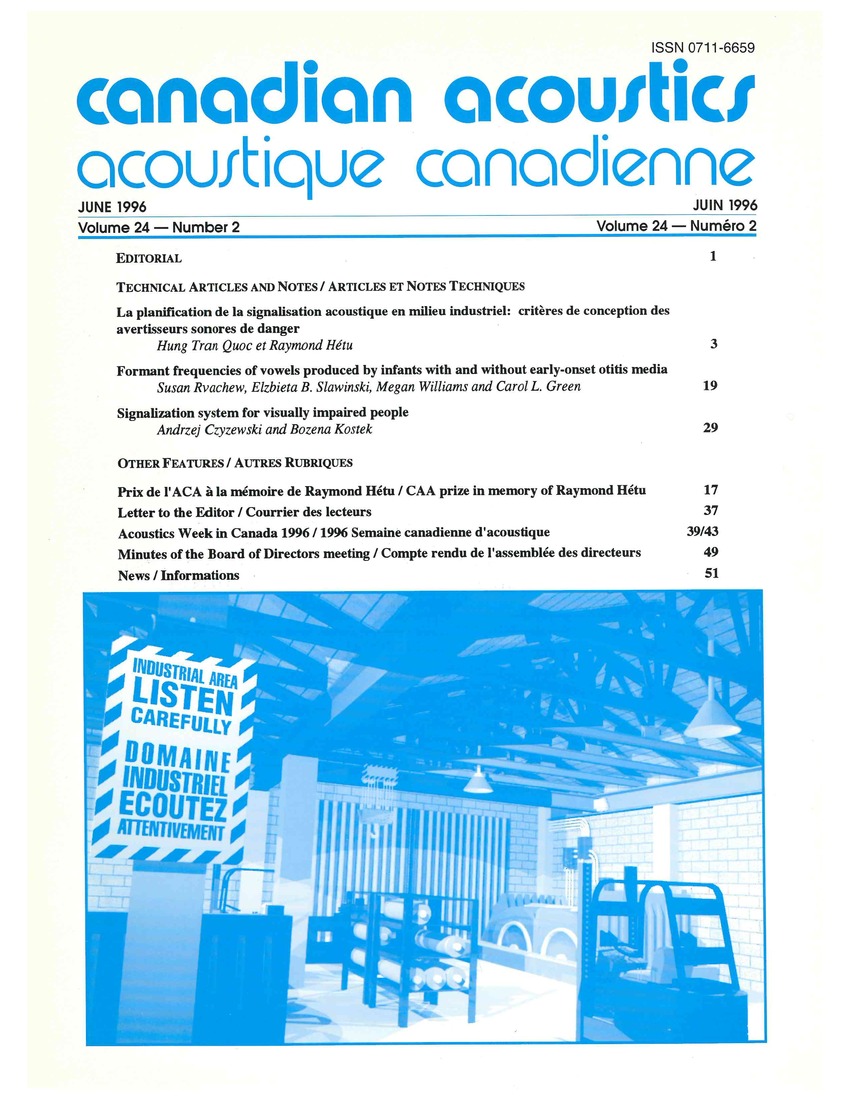Formant frequencies of vowels produced by infants with and without early onset otitis media
Keywords:
hearing, speech, vowel formant frequencies, infants, early onset otitis media, babble, ear infections, F2 frequencies, F1 frequencies, canonical syllables, sensori-neural hearing impairmentAbstract
Samples of speech/babble were recorded from 18 infants on a longitudinal basis once every 3 months between 6 and 18 months of age. Nine of the infants were treated for at least one episode of otitis media at or before 6 months of age (Early Onset group) while the remaining infants experienced no ear infections during the first 6 months of life (Late Onset group). Analysis of the F1 and F2 frequencies of vowels contained within canonical syllables revealed no age or group related differences in the mean F1 or F2 frequencies; in the standard deviation of the F1 frequencies, or in the geometric mean of the F2/F1 ratio. However, the standard deviation of the F2 frequencies increased significantly with age. At 18 months of age, the standard deviation of the F2 frequencies was significantly smaller for the Early Onset group in comparison with the Late Onset group. These findings show that recurring otitis media with early onset can result in a restricted vowel space, mirroring previously reported findings for infants with more severe, sensori-neural hearing impairmentAdditional Files
Published
How to Cite
Issue
Section
License
Author Licensing Addendum
This Licensing Addendum ("Addendum") is entered into between the undersigned Author(s) and Canadian Acoustics journal published by the Canadian Acoustical Association (hereinafter referred to as the "Publisher"). The Author(s) and the Publisher agree as follows:
-
Retained Rights: The Author(s) retain(s) the following rights:
- The right to reproduce, distribute, and publicly display the Work on the Author's personal website or the website of the Author's institution.
- The right to use the Work in the Author's teaching activities and presentations.
- The right to include the Work in a compilation for the Author's personal use, not for sale.
-
Grant of License: The Author(s) grant(s) to the Publisher a worldwide exclusive license to publish, reproduce, distribute, and display the Work in Canadian Acoustics and any other formats and media deemed appropriate by the Publisher.
-
Attribution: The Publisher agrees to include proper attribution to the Author(s) in all publications and reproductions of the Work.
-
No Conflict: This Addendum is intended to be in harmony with, and not in conflict with, the terms and conditions of the original agreement entered into between the Author(s) and the Publisher.
-
Copyright Clause: Copyright on articles is held by the Author(s). The corresponding Author has the right to grant on behalf of all Authors and does grant on behalf of all Authors, a worldwide exclusive license to the Publisher and its licensees in perpetuity, in all forms, formats, and media (whether known now or created in the future), including but not limited to the rights to publish, reproduce, distribute, display, store, translate, create adaptations, reprints, include within collections, and create summaries, extracts, and/or abstracts of the Contribution.


